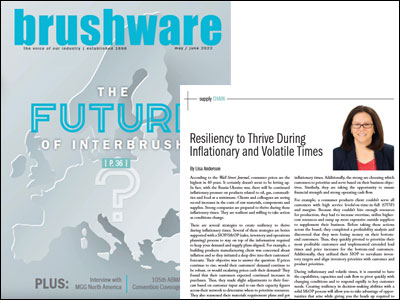According to the Wall Street Journal, consumer prices are the highest in 40 years. It certainly doesn’t seem to be letting up. In fact, with the Russia-Ukraine war, there will be continued inflationary pressures on products related to oil, gas, commodity, and food at a minimum. Clients and colleagues are seeing record increases in the costs of raw materials, components, and supplies. The strong companies are prepared to thrive during these inflationary times. They are resilient and willing to take action as conditions change.
There are several strategies to create resiliency to thrive during inflationary times. Several of these strategies are better supported with a SIOP/ S&OP (sales, inventory, and operations planning) process to stay on top of the information required to keep your demand and supply plans aligned. For example, a building products manufacturing client was concerned about inflation, and so did a deep dive into their customers’ forecasts. Their concern was to answer the question of if prices continue to rise, would their customers’ demand continue to be robust or would escalating prices curb their demand? In their case, their customers expected continued increases in purchases. Thus, they made slight adjustments to their forecast based on customer input and re-ran their capacity figures across their network to determine where to prioritize resources. They also reassessed their material requirements plans and got in touch with key suppliers to secure the appropriate level of supplier capacity and transportation resource commitments.
No client has been able to procure the optimum number of raw materials or hire the desired number of people to fully ramp up production and support resources to the optimum level to keep up with customer demand and to prepare for the future during these inflationary times. Thus, the most successful clients have utilized their SIOP process to quickly reassess customers and products, both from a strategic point-of-view as well as from a profitability viewpoint. As has been commonplace across the board, the smart clients are taking the opportunity to set pricing in alignment with their objectives, and they are rationalizing skus and pivoting to a product portfolio that will weather inflationary times. Additionally, the strong are choosing which customers to prioritize and serve based on their business objectives. Similarly, they are taking the opportunity to ensure financial strength and strong operating cash flow.
For example, a consumer products client couldn’t serve all customers with high service levels / on-time-in-full (OTIF) and margins. Unfortunately, because they couldn’t hire enough resources for production, they had to increase overtime, utilize higher cost resources, and ramp up more expensive outside suppliers to supplement their business. Before taking these actions across the board, they completed a customer and product profitability analysis and discovered that they were losing money on their bottom customers. Thus, they quickly pivoted to prioritize their most profitable customers, and implemented extended lead times and price increases on the bottom customers. Additionally, they utilized their SIOP to reevaluate inventory targets and align inventory priorities with customer and product priorities.
During inflationary and volatile times, it is essential to have the capabilities, capacities, and cash flow to pivot quickly with changing conditions and to respond rapidly to key customer needs. Creating resiliency in decision-making abilities with a solid S&OP process will allow you to take advantage of opportunities that arise while giving you the heads up required to take a sharp left turn as needed to shed the strategies that aren’t working. During these volatile times, the strong and resilient will get stronger, and the weak and stodgy will get weaker. Opportunities will abound for the resilient.
As originally published in Brushware Magazine on May-June, 2022



